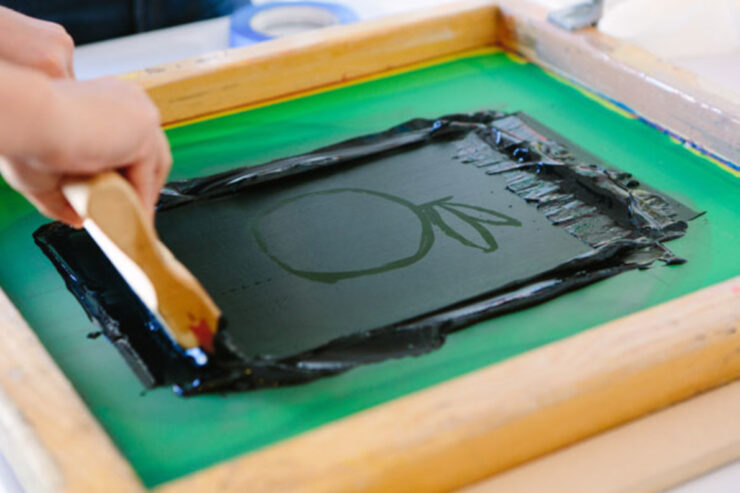Screen printing, a versatile and dynamic printing technique, has entrenched itself as an indispensable practice across numerous industries, including fashion, advertising, fine arts, and even technology. It is beloved for its unique ability to render vibrant, long-lasting designs on a multitude of substrates, making it a go-to for many businesses and creative practitioners. But mastering it requires understanding the nuances of the craft. The purpose of this comprehensive blog post is to guide you, step-by-step, providing invaluable insights on how to effectively trim costs while ensuring high-quality, beautiful screen prints.
Understanding Screen Printing
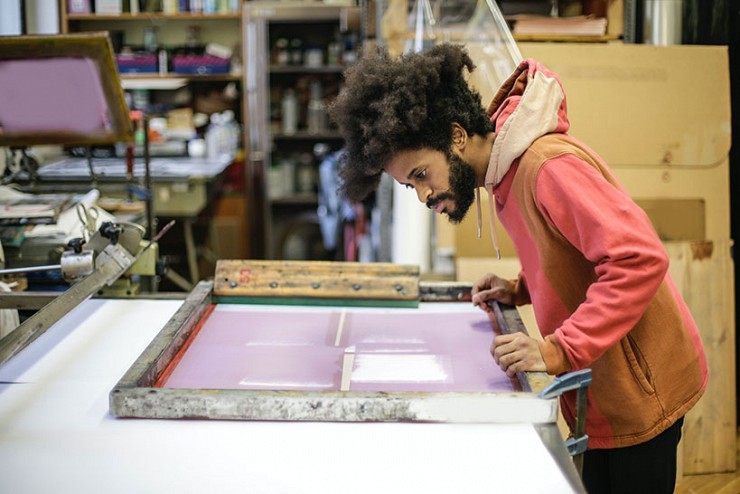
Screen printing, also known as silk-screening, is a method where a design is transferred onto a substrate using a mesh screen, ink, and a squeegee. Unlike digital printing that merely sprays ink onto a surface, screen printing methodically deposits a thicker layer of ink, producing durable and brilliantly colored prints that stand the test of time. Moreover, the flexibility of screen printing to effectively print on varied surfaces—be it fabric, glass, wood, or even metal—offers a clear advantage over other printing methods. Mastering this versatile, cost-effective, and reliable technique can significantly enhance the overall value of your printing projects.
Setting Clear Objectives
A strategy that stands out for efficiently managing costs while maintaining print quality is to define clear, measurable objectives before initiating the screen printing process. Understanding the desired outcome, whether it’s for a commercial product line or a unique art project, allows for accurate cost estimation and better resource planning. These goals should factor in budget constraints, expected print quality, the volume of prints, and the project timeline, acting as a roadmap to guide your project towards success while mitigating any financial surprises.
Choosing the Right Materials
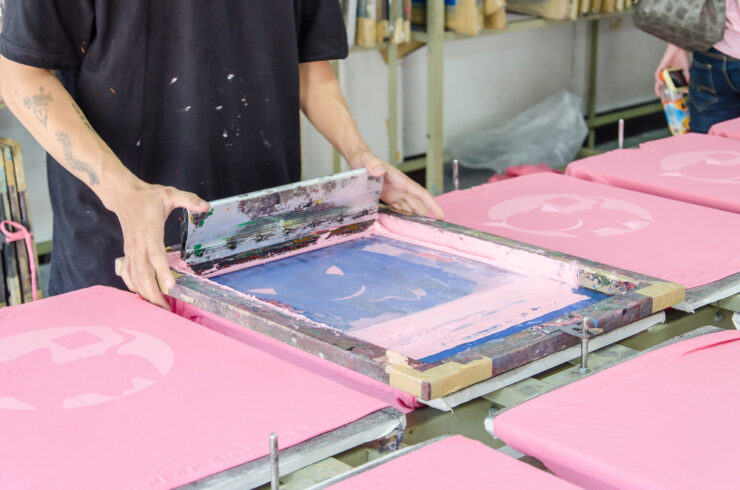
The selection of appropriate materials – screens, inks, and substrates – significantly influences both the cost and the quality of your prints. The right kind of screen printing supplies can be found at holdensscreen.com so we got that covered for you. The mesh count of your screen should correspond to the intricacy of your design and the viscosity of your ink. Lower mesh counts are suitable for bold designs with thicker inks, while higher counts cater to intricate, fine-line art with thinner inks. Moreover, inks must be chosen wisely to ensure compatibility with your chosen substrate for optimum adhesion and longevity. Striking a balance between these factors can lead to stunning, high-quality prints without exhausting your budget.
Optimizing Design for Efficiency
A cleverly planned design, with fewer colors and simpler elements, can significantly cut costs without sacrificing the visual appeal or message. Minimizing color use reduces the number of required screens and the associated setup time, consequently decreasing expenses. Moreover, optimizing your design for screen printing, such as creating vector art and avoiding small, intricate details, can yield better, cleaner results while simplifying and speeding up the printing process.
Mastering Color Separation
Color separation involves breaking down a multicolored design into individual single-color components, each requiring a screen for printing. A properly separated design allows for minimal ink usage, precise color overlays, and considerable cost savings. Utilizing digital software tools like Adobe Illustrator or Photoshop can aid in efficient color separation. Furthermore, the clever use of halftones can achieve gradients or shadows without introducing new colors, further optimizing cost and enhancing the design.
Screen Preparation Techniques
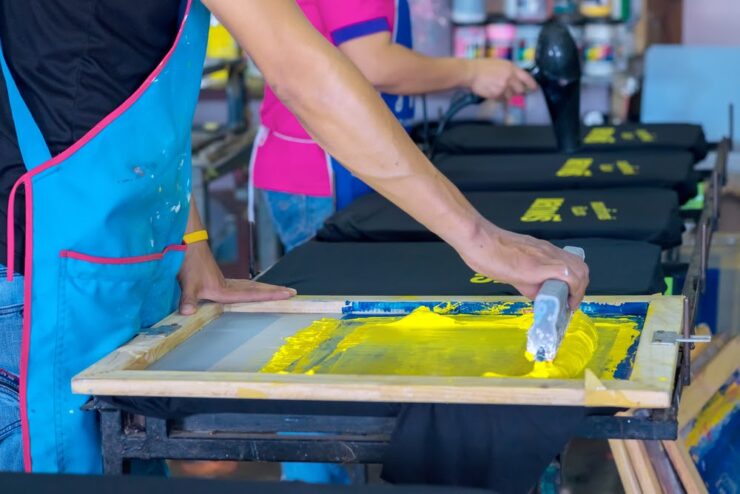
Screen maintenance is key to maximizing its lifespan and performance, thereby reducing replacement costs. Effective screen preparation involves diligent cleaning, degreasing, and emulsion coating. Ensuring these practices are carried out regularly and correctly contributes to a well-maintained screen. This results in cleaner, sharper prints, improving overall print quality and thereby increasing customer satisfaction.
Ink Management and Application
Effective ink management is another crucial factor that can substantially decrease costs while ensuring consistent print quality. By using ink volume calculators, mixing inks carefully, and storing them correctly, you can avoid wastage and unnecessary purchases. During application, the technique of flooding the screen before each print can maintain an even ink distribution, resulting in consistent, high-quality prints with less waste and greater efficiency.
Choosing the Right Printing Method
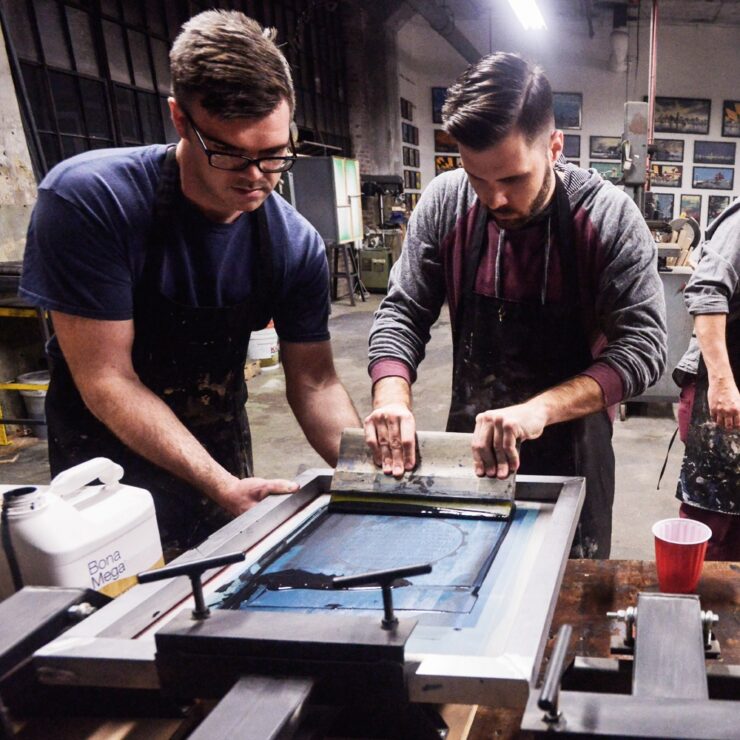
Choosing between manual and automatic printing methods can significantly impact your costs and print quality. Manual printing offers lower upfront costs and hands-on control, making it suitable for small-scale, custom projects, or beginners in the screen printing world. In contrast, automatic machines, though more costly initially, provide unmatched speed and consistency, ideal for large-volume orders and businesses. Aligning your chosen printing method with your project scope, budget, and long-term goals can enhance efficiency and cost-effectiveness.
Budget-Friendly Equipment and Tools
Investing in cost-effective, but high-quality, tools and equipment can reduce costs without compromising the quality of your prints. Entry-level manual presses or second-hand equipment, when chosen carefully, can provide beginners with a practical, hands-on experience without the need for a hefty investment. As your proficiency grows and the scale of your business or projects increase, you can then consider upgrading to professional-grade tools that promise even higher efficiency and quality.
Efficient Production Workflow

Efficient workflow management can save invaluable time and resources, reducing overall production costs significantly. This includes organized workstations, scheduling prints based on color sequences to reduce clean-up and setup time, and batch processing to minimize interruptions and maximize productivity. Proper planning and streamlined workflow ensure smoother operations, timely completion of your projects, and consequently, happier customers.
Quality Control and Feedback Loop
Regular quality checks during and after printing ensure consistent, high-quality prints that meet customer expectations. A feedback loop involving customer reviews or peer evaluations can provide insight into areas of improvement, from design to execution. This ongoing process of refinement and learning from feedback can progressively enhance your print quality while revealing cost-saving opportunities over time.
Conclusion
Screen printing is a rich and intricate craft that involves a delicate balance of art and science. By setting clear objectives, selecting the right materials, optimizing design, effectively managing ink, and maintaining workflow efficiency and quality, you can significantly trim costs without compromising on print quality. So, as you embark on your exciting journey into the world of screen printing, embrace these cost-cutting tips and strategies to consistently create purposeful, beautiful prints that resonate with your audience.

